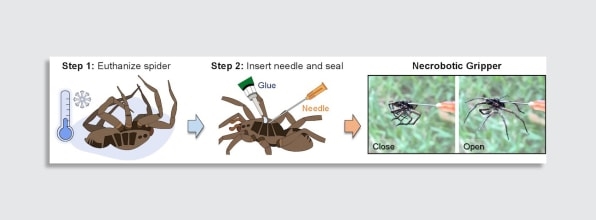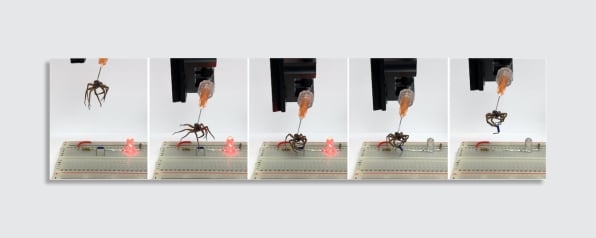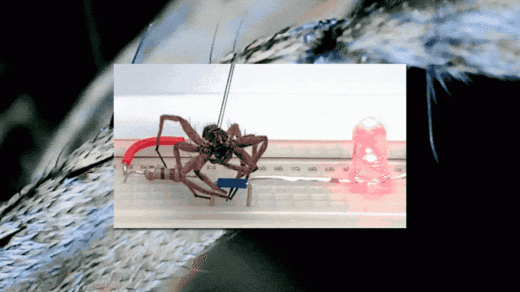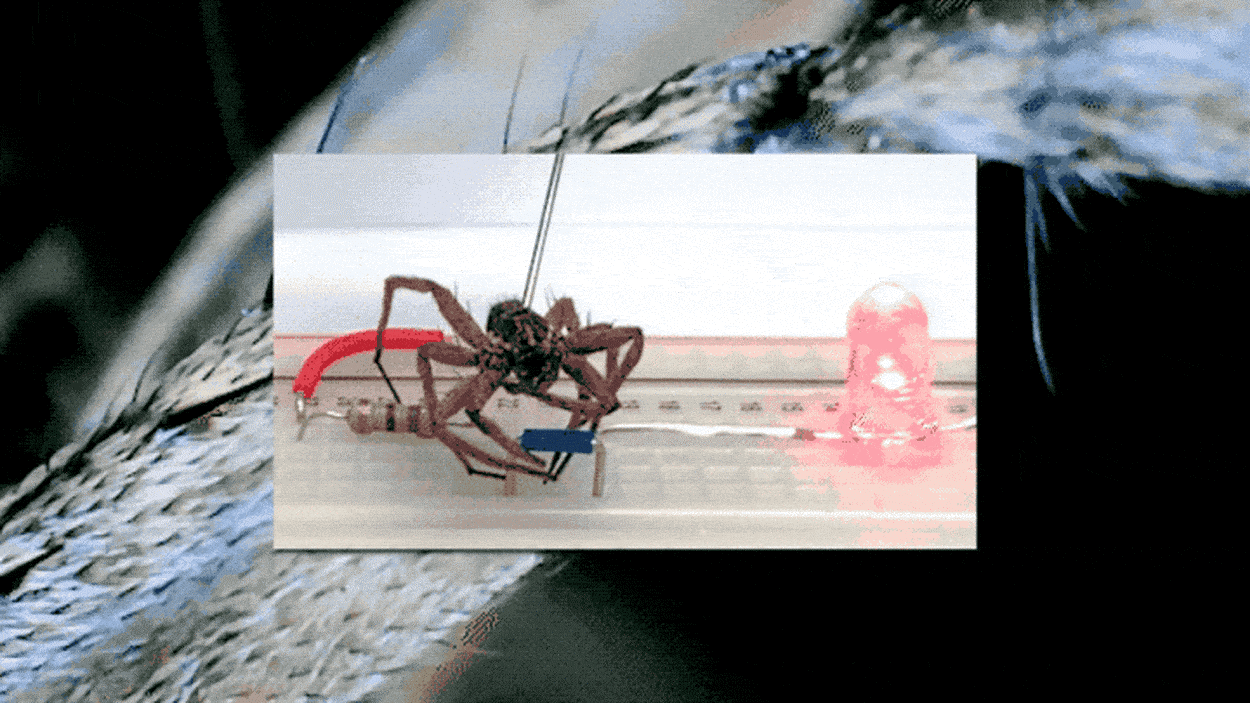These dead spiders have been transformed into tiny robots
If you happened to find a dead spider somewhere around your home—no questions or judgments about how the critter met its end, of course—you might notice it curled up, with its eight legs no longer spread wide, but crumpled together into a ball.
Robotic scientists at Rice University observed precisely this phenomenon in their hallway, soon after opening the Preston Innovation Lab in 2019. There, they were already concerned with soft robotics—the use of soft materials like hydrogels and textiles, instead of typically hard substances like plastics and metals—but they weren’t expecting spiders to end up as one such material. Now, they’ve developed a mechanism in which a dead spider can become a ready-to-use gripping tool for small and delicate objects of up to 1.3 times the spider’s body weight. They’re able to manually contract and expand their legs with air pressure, and the scientists predict the tiny claw machines could have broader applications.

“The spiders’ innate architecture can be hydraulically actuated,” says Faye Yap, one of the researchers and coauthors of the study. It’s made possible because spiders’ limbs move via hydraulic pressure from their blood. When a chamber near their heads contracts, blood rushes to their flexor muscles and forces them to extend their legs. That’s different from mammals, whose muscles work in pairs; as our biceps contract, our triceps extend, and vice versa. “We thought that this mechanism was really interesting, and we wanted to leverage that,” Yap says.
Wolf spiders were used in the lab; they’re half an inch to two inches in size and are agile hunters. (They do so without webs, but by jumping on prey, holding them between their legs, then injecting them with venom.) The team procured the spiders in mass from a biology supply center, and euthanized them by freezing them at 25 degrees Fahrenheit for about a week. Then, they threaded a needle through the corpse’s hydraulic chamber, and glued it into place, with a syringe on the other end held by the researchers. To operate the spider bots, they pushed the syringe and forced air pressure into the bodies. The pneumatic force extended the legs, achieving full motion in less than a second.

In the lab, the new grippers were made to lift and move a variety of objects. But unlike the pesky arcade claw machines that take your change and never latch onto toys, the spiders were actually effective. They moved items around a circuit board to power an LED, grasped both brittle objects and a foam block 2.6 times their size, and even picked up other spiders. The researchers also note that the fine hairs on the spiders’ legs probably provide some extra grip.
Particularly, they found that smaller spiders could lift more relative to their body weights than larger ones, predicting that an even lighter species would lift twice their body weight. While that may sound minuscule, the mechanisms could have real-world applications in lifting tiny, fragile objects, especially ones with irregular geometries. They could be used in the field to pick up insects for experiments without damaging them. They could manipulate small objects in tiny electrical circuits, participating in micro-electronic assembly. At scale, on an assembly line, a number of the critters would likely be attached to a robotic arm, with an air pressure line to extend all the little grippers.
The study marks the creation of a brand-new field, which the researchers christened “necrobotics” (literally, death and robots), whereby biotic materials from once-living organisms are used as robotic components. The field fits in with the lab’s focus on soft robotics, which are often safer than hard automatons. (Recently, for instance, a hard chess-playing robot in Moscow broke a 7-year-old’s finger.)
There’s some further work to be done. At scale, they’ll have to grapple with the ethics around sourcing and euthanizing masses of spiders. And they’ll have to deduce (somewhat paradoxically) the lifespan of a dead spider. In these early trials, they found that after about 1,000 clutches, the tools lost some effectiveness, but they believe that could be improved simply by applying a polymeric coating to the carcass to keep it hydrated.
Other critters with similar hydraulic biologies could also prove useful. The researchers mention the patu digua, an arachnid with the Guinness World Record for smallest spider, at about a fifth the size of a pinhead, for “microscale manipulation.” Meanwhile, the small whip scorpion—also known as a vinegarroon, due to the acidic mix with which it sprays prey—could take even less time to react to the air pressure than their spider cousins. “We hope to push that limit even further,” says Yap.
(23)



